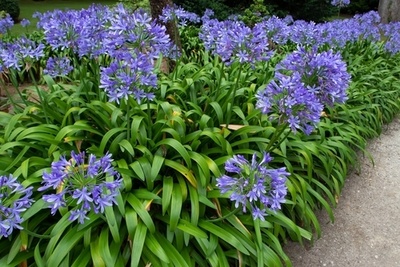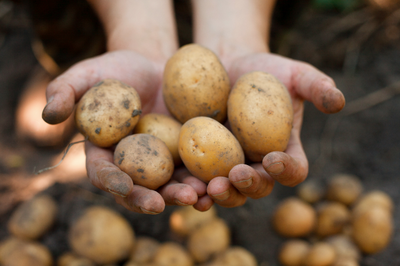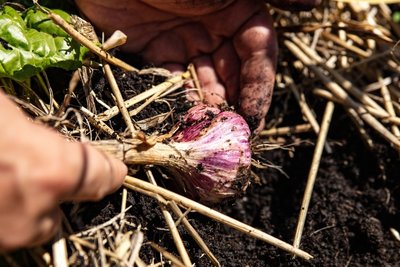
If planning to create a hedge you'll probably need a lot of plants and so you might like to consider using bare-rooted plants. They're grown in the ground rather than in containers, making them less expensive than pot grown ones. Bare-rooted plants are dug up and sold between November to March while they're dormant and provided they’re planted correctly, they'll grow into strong, healthy plants. Here’s how it’s done:
How to plant bare-root plants
-
Plan ahead. It's important that bare rooted plants are planted as soon as possible to stop the roots from drying out, so prepare the planting area beforehand by clearing any debris, dig over the area well mixing in well-rotted farmyard manure to improve the soil structure and provide slow-release feed.
-
If you can’t plant your bare root hedging straight away, store it carefully so that the roots don’t dry out. If it’s only going to be stored for a few days, wrap the roots in damp sacking or newspaper and place the plant somewhere cool and dark. Keep the sacking or paper damp.
-
If it’s going to be several weeks before you can plant, heel your plants in by digging a trench, placing the plants with their roots in the trench and backfilling with soil. If the ground is frozen or waterlogged, pot the plants up in large pots filled with compost, taking care not to bend the roots.
-
Before you plant a bare root plant, soak the roots in a bucket of water for an hour to rehydrate them.
-
Depending on the spacing and layout of your hedge plants, you will choose whether to dig a trench or individual holes.
-
You should be able to see a ‘tidemark’ on the plant's trunk that will show the previous soil level. When planting, ensure that the plant is at the same level in the soil as previously. Planting too deep can cause the trunk to rot, killing the plant.
-
If you've already mixed manure into your soil, you shouldn't need additional fertiliser at this stage. Once the hedge plants begin to grow, you could add some slow-release fertiliser which will provide a steady source of feed for about 6 months.
-
Backfill with soil and firm down gently with the heel of your boot - this is important to ensure that the roots make good contact with the soil otherwise they won't be able to take up moisture and nutrients. If it is very windy (as can be the case in East Lothian!) you may need to re-firm the plants around the base until they start growing and stabilise in the ground.
-
Water well after planting to settle the soil and encourage good contact between the roots and the soil. Water regularly during the first year after planting until the plants are clearly managing to source moisture for themselves.
Now’s a great time to plant so why not visit us at Merryhatton and choose the hedging plants that are right for your garden?
Or see online by clicking here




